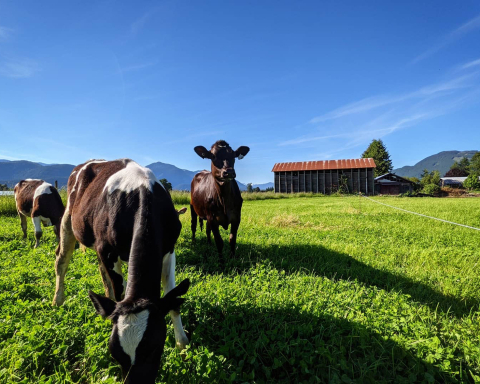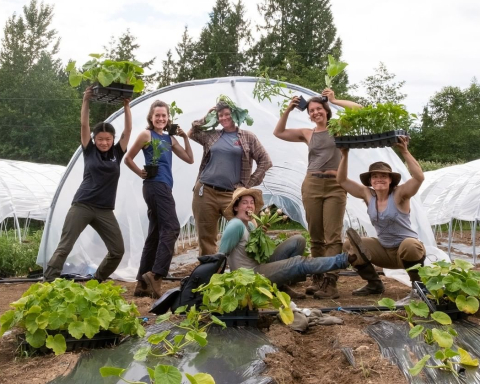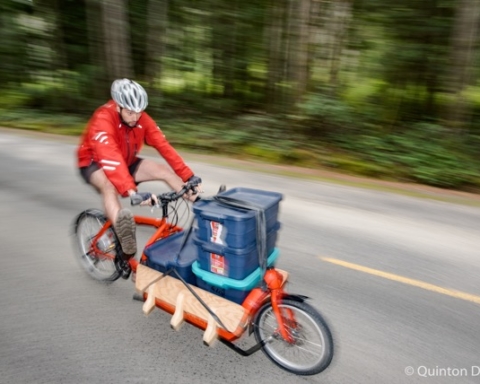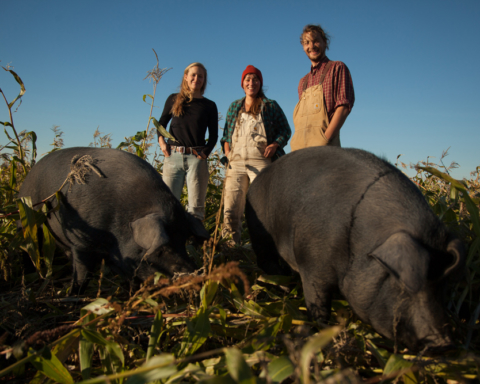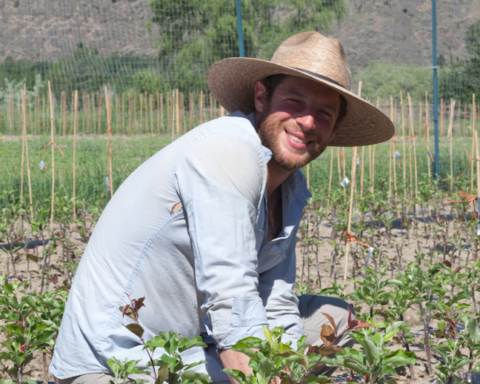Excerpts from The Future of Our Food System: Report on the Southwest BC Bioregion Food System Design Project by the Institute for Sustainable Agriculture at Kwantlen Polytechnic University (KPU). Reprinted with thanks to Kent Mullinix and the Institute for Sustainable Agriculture at KPU
Foreword to The Future of Our Food System
William Rees
Society is only three square meals away from revolution. —Leon Trotsky (i)
H. sapiens is an enigmatic species. Humans have evolved high intelligence, making us uniquely capable of reason and logical analysis; no other species can plan ahead, using available evidence to shape its own future.
But there is a problem. Humans are also endowed with behavioural predispositions that were once adaptive but have become impediments to survival today. In particular, humans are inherently short-sighted. Most people favour the here and now over future possibilities and distant places, a trait that economists have formalized as “social discounting.” This built-in myopia dilutes our ability to plan for the future.
To complicate matters, humans are myth-makers. While other species take the world as it comes, people socially construct shared perceptions of reality. Much of what we take to be “truth”—our various cultural narratives, religious doctrines, political ideologies, and academic paradigms—are largely products of the human mind. These stories are massaged and polished by social discourse and negotiation and ultimately elevated to the status of received wisdom by common agreement.
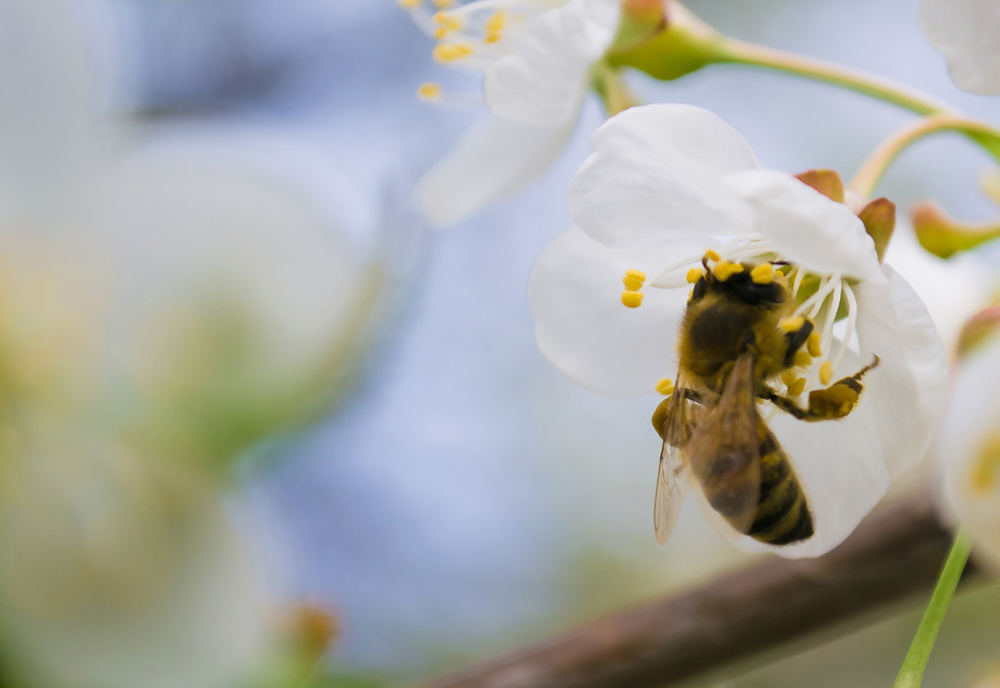
Most importantly, people “act out” from socially constructed beliefs as if they were ultimate truths. This is not a problem when a cherished myth resonates well with external reality, but what if our construct is little more than a shared illusion? Allegiance to ill-conceived myths and paradigms—the denial of contrary evidence—has presaged the collapse of countless social organizations, governments, and even whole societies since the dawn of civilization.
What has all this got to do with food? Food is the ultimate resource, yet myopia and denial are defining characteristics of society’s prevailing approach to food security. Food (and, often, agricultural land) is treated just like any other commodity, subject to the vagaries of market economics. And markets are intrinsically short-sighted—prices reflect current supply and demand with no capacity to factor in likely future conditions.
Moreover, contemporary neoliberal economics is “hands-off” economics, socially constructed to minimize government intervention (so much for long-term planning) and to optimize a single value: efficiency (who can be against efficiency?). Efficiency, in turn, demands local specialization in a few commodities supplemented by trade for everything else. This creates monocultures and potentially unsustainable producer and consumer dependencies. Meanwhile, increasing competition in global markets drives producers to externalize ecological costs such as soil and water pollution and bid down local wages. In short, the economic paradigm that is shaping what (and even whether) we will produce and consume in coming decades ignores such values as community cohesion, equity, regional self-reliance, economic diversity, and ecological stability while simultaneously inhibiting public planning for global change.
Little sign of high intelligence here, and too bad, given that significant change is a certainty. This is the Anthropocene. Global warming and increasingly unpredictable climate is already upon us, biodiversity is plunging, soils are eroding and water tables falling, an energy crisis has been headed off only by a slowing global economy but will return (particularly significant because “modern agriculture is the use of land to convert petroleum into food” (ii), sea level rise and desertification are likely to destroy vast areas of agricultural land and displace millions of desperate people, and such trends can only increase geopolitical tensions and the likelihood of resource wars.

Meanwhile, most of the official world remains in a socially constructed bliss-bubble. Blinded by the prevailing myth of perpetual growth and continuous technological progress, we are not quite able to admit that these trends may herald a global food crisis. Consider the following burst of (effectively self-cancelling) optimism from the UN Food and Agriculture Organization:
“Barring major upheavals coming from climate change and the energy sector or other events that are difficult to foresee—such as wars or major natural catastrophes leaving long enduring impacts—world agriculture should face no major constraints to producing all the food needed for the population of the future, provided that the research/ investment/policy requirements and the objective of sustainable intensification continue to be priorities.” (iii)
What this really says is if none of the highly likely events that could prevent it from happening actually happens, and everything needed to make it happen does happen, then world agriculture will have no problem producing all the food needed for future populations. This is an impossibility theorem; there will be “major constraints” in meeting global food demand.
This is why everyone concerned about food and food security in Southwest BC—anywhere, actually—should be interested in the present study: The Future of Our Food System assumes from the outset that the system must adapt to changing biophysical and geopolitical realities. It is increasingly unwise for any region to become excessively dependent on potentially unreliable external sources of supply or to commit an excessive part of its own productivity to external markets. With cool intelligence and a steady eye on the future, this project explores alternative scenarios for expanding food production and processing in the bioregion and asks whether regional self-reliance can be increased while minimizing ecological costs. These are questions every bioregion should be asking.
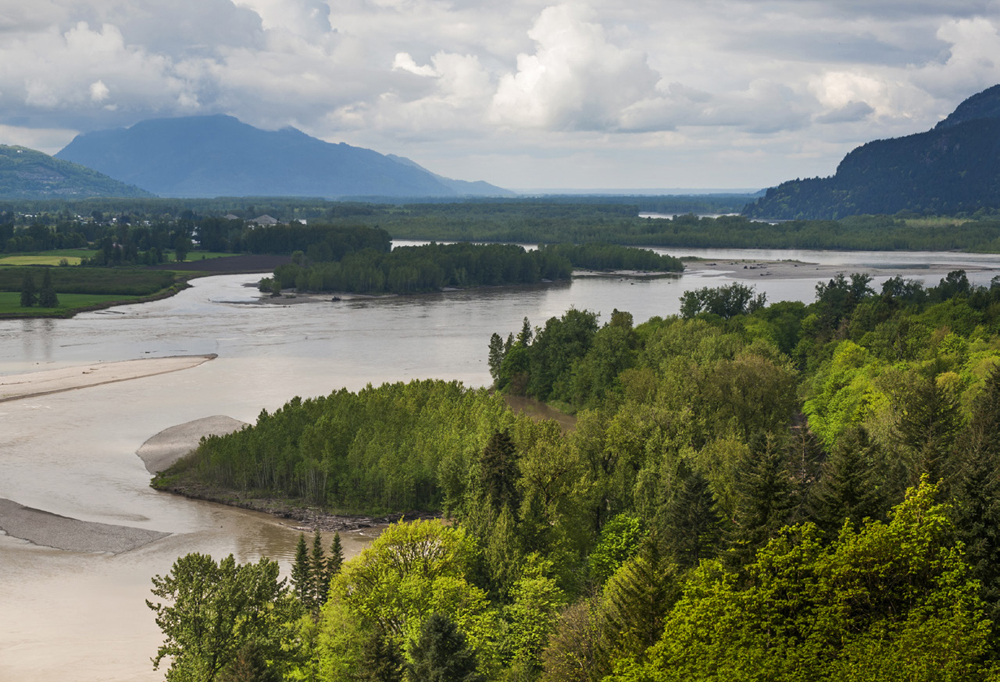
In the case of Southwest BC, the answers raise an ominous yellow flag. In baseline year 2011, the bioregion’s 2.7 million people had only .06 hectares of arable land per person, including grazing land; by 2050, when the population is expected to be 4.3 million, the ratio falls to only .04 hectares per person. This actually compares unfavourably to the already (arguably inadequate) global figure of .20 hectares arable land per person, exclusive of grazing land. Tellingly, it currently takes about .50 hectares per person of arable land to produce the average North American diet.
We should therefore not be surprised (but should be alarmed) that under the most optimistic scenario, with most of its arable land in production, Southwest BC could become only 57% food self-reliant by 2050 (assuming a standard recommended Canadian diet). This is twice the performance available from business as usual but leaves the region’s people heavily dependent on imports from elsewhere—imports that may well not be available.
It is clearly time to rethink the region’s entire development trajectory—indeed, the world’s development trajectory. The predicament revealed in The Future of Our Food System is typical of modern urbanizing regions. Food (in)security may well become the defining anxiety of the early Anthropocene. The only question is whether the world community can abandon its dangerous illusions, accept the evidence of a gathering storm, and apply humanity’s much-vaunted high intelligence to planning a way through.
There should be enough incentive: if the world fails to maintain the three-meal buffer, chaos and anarchy will not be far behind.

Excerpted from The Future of Our Food System:
What Is a Food System?
Many are becoming aware of the concept of food systems. Examination and discourse around food’s relationship to community, economy, and environment has shifted from agriculture to the food system as a whole. Lisa Chase and Vern Grubinger describe a food system as “an inter- connected web of activities, resources and people that extends across all domains involved in providing human nourishment and sustaining health, including production, processing, packaging, distribution, marketing, consumption and disposal of food.” The authors go on to say that our food systems are reflective of and responsive to the social, cultural, economic, health, and ecological conditions in which they exist. These interacting conditions occur or are imposed at multiple scales, from national and provincial to city and household. These conditions, regardless of scale, must be compelled to work in concert to achieve the characteristics and outcomes of the food system we want for our communities and a sustainable future.
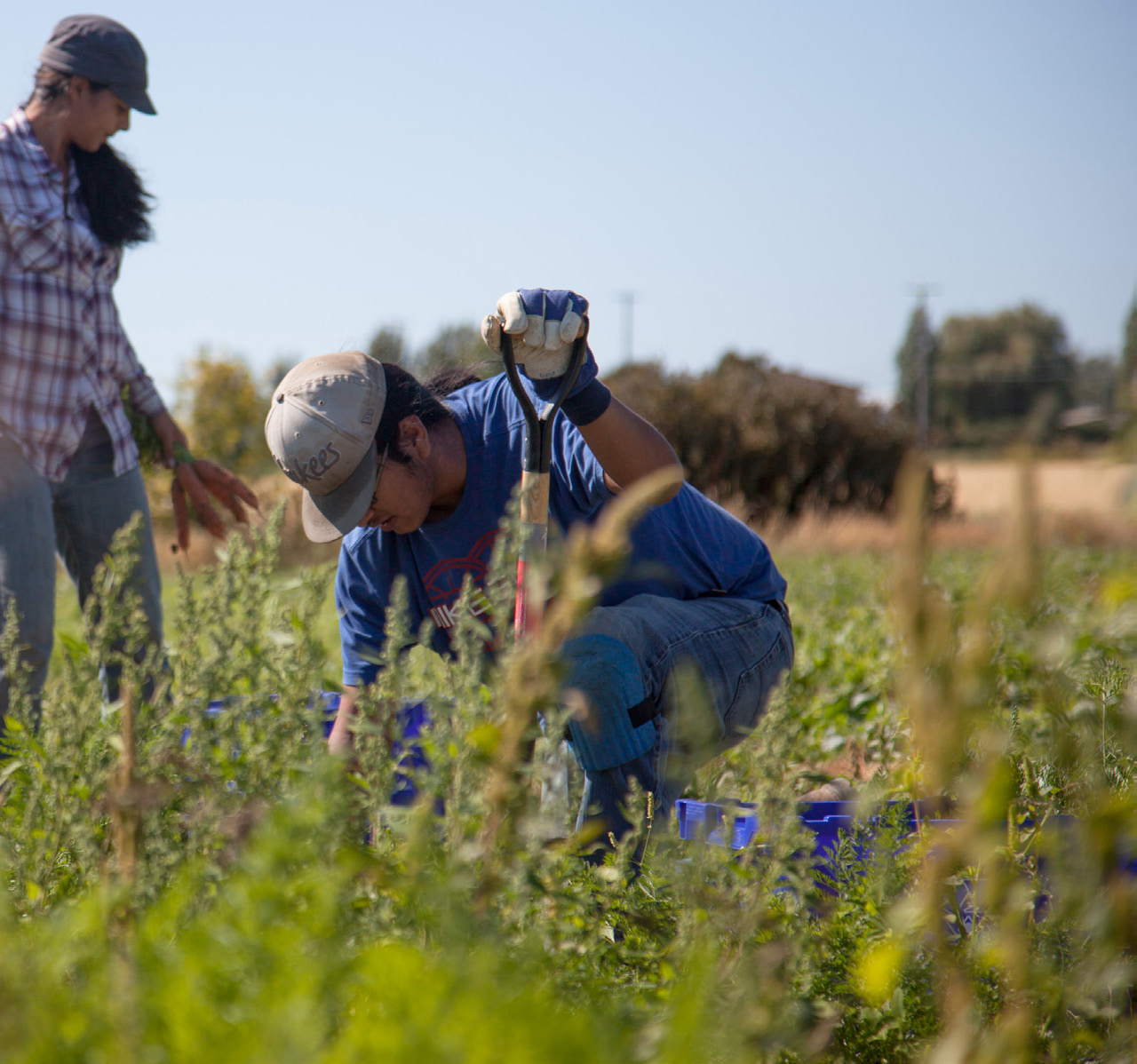
What Is a Bioregion?
Bioregions are generally defined as areas that share similar topography, plant and animal life, and human culture; they are not just geographical or political areas delineated by lines on a map but are conceptual as well. Bioregionalism adheres to the notion that human settlement and land use patterns must be viewed as integral, functional components of ecosystems rather than as separate, unrelated entities. (12)
What Is Needed for a Sustainable Future?
Our food system is far from sustainable. It is dependent on diminishing supplies of oil and fresh water and threatened by global warming. Its adverse environmental impacts, such as groundwater contamination, habitat destruction, soil degradation and loss, and enormous greenhouse gas emissions contributing to global warming are undisputed.(1) In BC, as elsewhere, food price increases, food insecurity, diet-related disease, and the economic marginalization of farmers and loss of revenue from the local economy is also of concern.(2) In Southwest BC, we spend an estimated $8.6 billion on food annually,3 but much of this does not stay in the local economy because it is spent on imported food or in non-local food system businesses.
Climate change, food and energy price instability, and dietary preferences are limiting the capacity of our food system to provide sufficient food. Our food system future seems tenuous, and perhaps the only thing we know for certain is that our population will continue to grow, requiring more food to sustain it. We need to purposefully address the challenge of providing food for all, in sustainable ways, well into the future.
A sustainable future requires a sustainable food system.
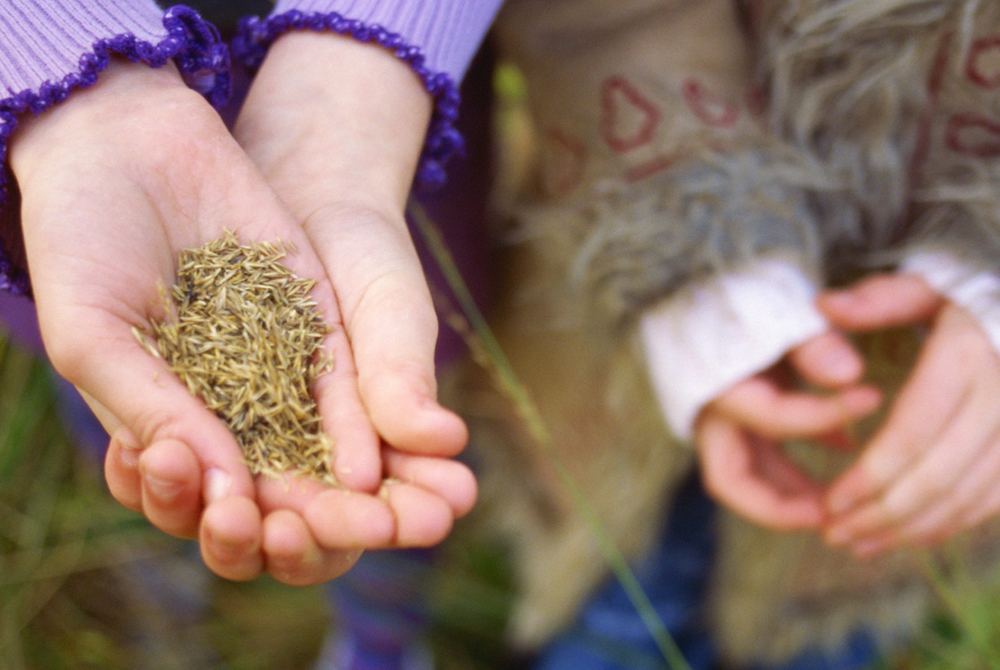
Some argue that localizing food systems will better ensure a sustainable, resilient food supply into the future. Local food systems are characterized by greater food self-reliance, which is defined as the ability to satisfy local food needs with food grown locally. Local food systems are purported to have greater social benefit,(4) reduce negative environmental impacts associated with bringing food from farm to plate,(5) improve community health, nutrition, and food safety,(6) and strengthen economies.(7)
In BC, food security experts have identified food self-reliance as a key climate change adaptation strategy(8) and argue that increasing local fruit and vegetable production capacity makes sense in a future where imports may not be as available or as cheap.(9)
Organizations across the province have mobilized around the themes of food, land, culture, and ecological sustainability. Increasingly, local governments and the private sector are supporting local food systems as vehicles for community and economic development. In Southwest BC, many local governments have introduced policies supportive of food system localization and residents are increasingly interested in the concept.
Despite a growing interest in food system localization, there remains little information about how or to what degree it can realistically address our food system sustainability concerns. We are at a critical moment in history where issues of climate change, food security, energy, and local economics are rapidly converging. The choices we make about our food system could potentially mitigate some of these issues or make them worse.
Click for more information on the Southwest BC Bioregion Food System Design Project, including the Project Summary The Future of Our Food System.
References From Foreword to The Future of Our Food System: i. W. J. Gingles, By Train to Shanghai: A Journey on the Trans-Siberian Railway (Bloomington, Indiana: Author House, 2006), 137. ii. A. Bartlett, “Forgotten Fundamentals of the Energy Crisis,” NPG Academic Series, 1998, 10, http://www.npg.org/forum_series/ ForgottenFundamentalsEnergyCrisisApril1998(web).pdf. iii. Food and Agriculture Organization of the United Nations, World Agriculture Towards 2030/2050, 2012 Revision (Rome, Italy: FAO, 2012), 20. (emphasis added) From The Future of Our Food System: 1. Lester R. Brown, Full Planet, Empty Plates: The New Geopolitics of Food Security (New York, New York: The Earth Policy Institute, WW. Norton & Company Inc., 2012). 2. Brown, Full Planet, Empty Plates. 3. Statistics Canada, “Table 203-0028: Survey of Household Spending (SHS), Detailed Food Expenditures, Canada, Regions and Provinces, Annual Dollars, CANSIM (database),” 2016, http://www5.statcan.gc.ca/cansim/a05. 4. Brian Halweil, “Home Grown: The Case for Local Food in a Global Market,” November 2002, http://www.worldwatch.org/system/ les/EWP163.pdf. 5. John E. Ikerd, “The Globalization of Agriculture: Implication for Sustain- ability of Small Horticultural Farms,” XXVI International Horticultural Congress: Sustainability of Horticultural Systems in the 21st Century (Toronto, Ontario: ISHS Acta Horticulturae, 2004), 399–410, http://www.actahort.org/ books/638/638_51.htm. 6. Kamyar Enshayan, Wallace Wilhelm, and Kate Clancy, “Local Food, Local Security,” Renewable Agriculture and Food Systems 19, no. 1 (February 12, 2004): 2–3, doi:10.1079/RAFS200359. 7. Gail Feenstra, “Local Food Systems and Sustainable Communities,” American Journal of Alternative Agriculture 12, no. 1 (1999): 28–36. 8. BC Food Systems Network, “Building Food Security in British Columbia in 2013,” http://bcfoodactionnetwork.com/sites/default/ les/Building%20 Food%20Security%20in%20BC%20in%202013%20Sept%2020.pdf. 9. Aleck S. Ostry, Christiana Miewald, and Rachelle Beveridge, “Climate Change and Food Security in British Columbia,” http://pics.uvic.ca/sites/ default/ les/uploads/publications/Food%20Security_2011.pdf. 10. American Planning Association, “APA Policy Guide on Community and Regional Food Planning,” 2007, https://www.planning.org/policy/guides/ adopted/food.htm. 11. L. Chase and V. Grubinger, Food, Farms, and Community: Exploring Food Systems (Durham, New Hampshire: University of New Hampshire Press, 2014). 12. P. Berg, “Bioregionalism (a definition),” The Digger Archives, 2002, http:// www.diggers.org/freecitynews/_disc1/00000017.htm.




